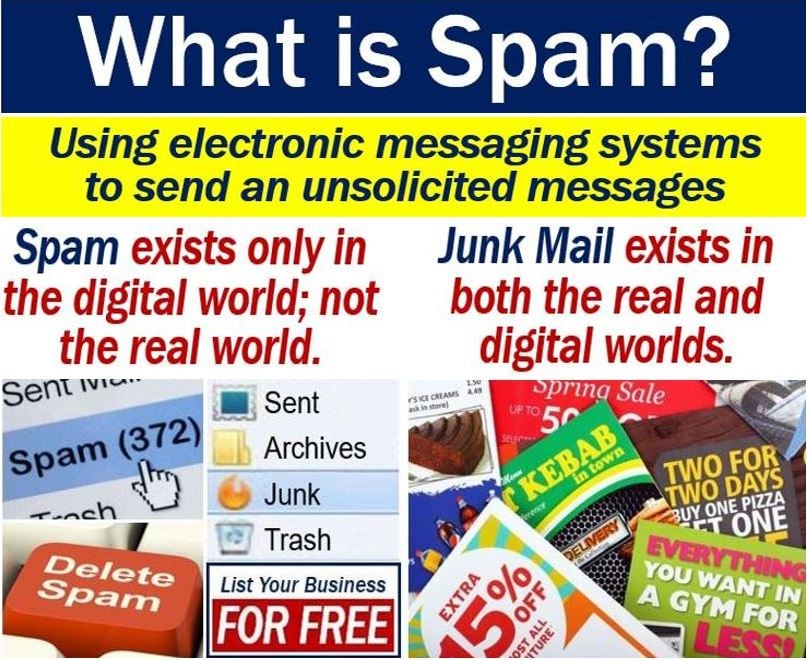Spam means mass mailing online by sending messages to thousands and sometimes millions of people simultaneously. The person who sends the spam is a spammer. Spammers send electronic messages to people without asking for their permission. Hence, spam is unsolicited online mail.
The term may also refer to a type of canned cooked meat that Hormel Foods Corporation makes and sells. It contains pork, ham, salt, potato starch, water, sodium nitrite, and sugar. Sodium nitrite is a preservative.
This article focuses on the term when it relates to unsolicited online messages.
Spammers flood the Internet with many copies of the same message. Spammers try to force messages on people who given a choice would not receive them.
Why do people spam?
In most cases, it is a form of commercial advertising. Sometimes, however, the spammer may be trying to steal people’s money or con them into purchasing get-rich schemes.
Phishing is a common activity for some spammers. Phishing is an attempt to get sensitive information such as passwords, credit card details, and usernames. People are involved in phishing for malicious reasons. They disguise themselves as trustworthy entities in emails.
For spammers, sending millions of electronic messages costs them very little. In fact, the recipients and carriers pay for most of the cost.
SpamAbuse.net has the following definition of the term:
“Spam is flooding the Internet with many copies of the same message, in an attempt to force the message on people who would not otherwise choose to receive it.
“Most spam is commercial advertising, often for dubious products, get-rich-quick schemes, or quasi-legal services.”

We believe that the idea of using the term ‘spam’ to mean online junk mail came from a 1970 Monty Python’s Flying Circus Skit. In the skit, everything a restaurant had on its menu devolved into spam. The term subsequently became associated with junk.
Spam vs. junk mail
The two terms often have the same meaning, but not always. Junk mail covers more situations.
Junk mail
This term also refers to unsolicited mail. Companies, charities, political parties, criminals, and con artists send junk mail.
However, junk mail may refer to either electronic or traditional mail, i.e., the real or digital worlds.
Traditional mail means physical paper, envelopes, and packages that we get through the post. We can touch them. Postal workers, i.e., human beings, bring traditional mail to our front door.
Spam
We only use this term for junk mail that occurs online. Spammers send messages via email, chat applications such as WhatsApp, and social media websites.
They may also use the text facility of online telephone conferencing services such as Skype.
We do not use the term for traditional mail.
Video – replying to spam email
In this TED video, comedian James Veitch narrates a hilarious story of when he replied to an online spammer.
